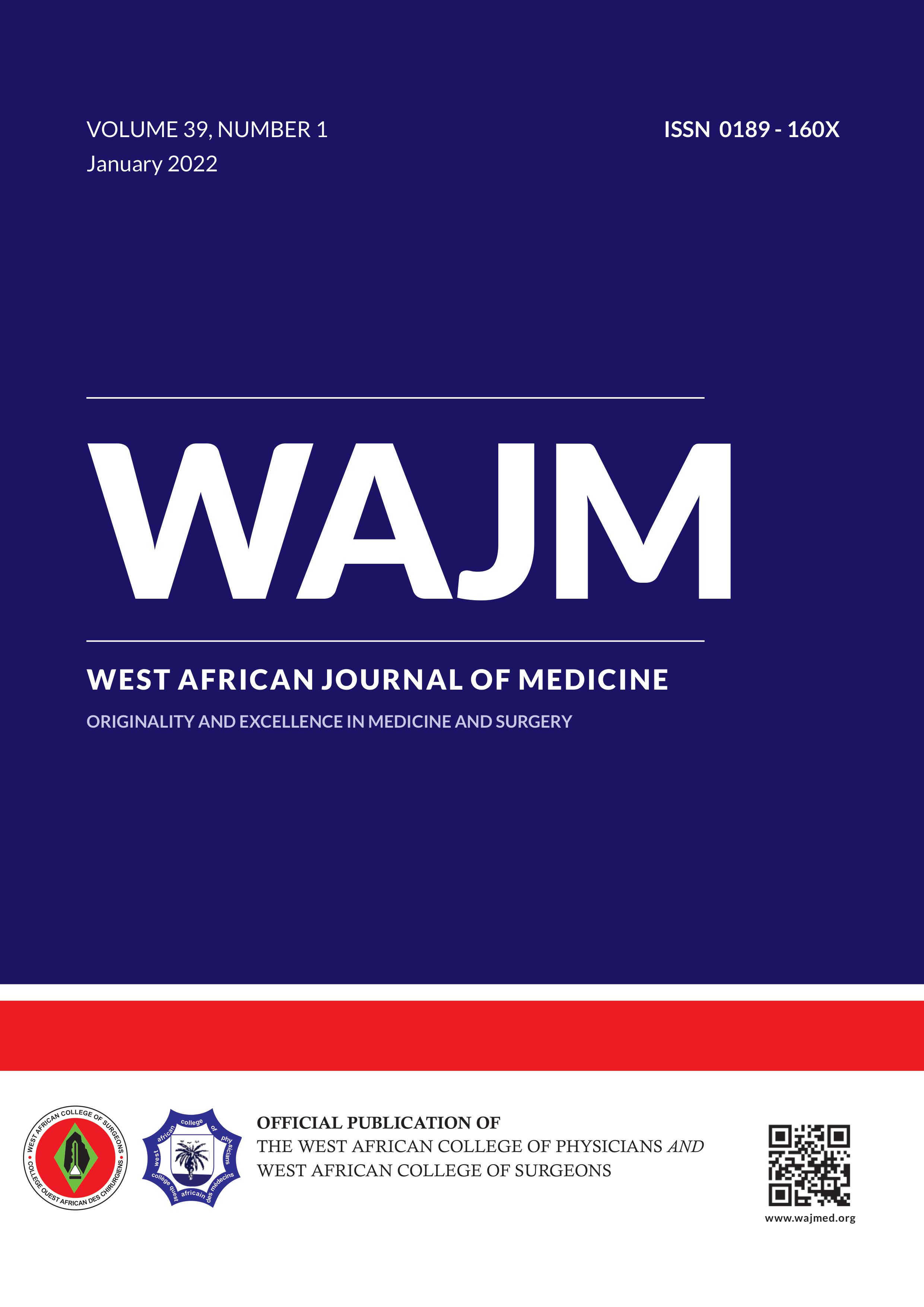ORIGINAL: Vitamin D Level in Patients Receiving Highly Active Antiretroviral Therapy in LAUTECH Teaching Hospital, Ogbomoso
West Afr J Med. 2022 January; 39(1): 70-75
Keywords:
HAART; HIV/AIDS; Hypovitaminosis D; Vitamin D.Abstract
Background and objective: Hypovitaminosis D is a worldwide disorder, with a high prevalence in the general population. This study aims to assess the serum vitamin D level and its relationship with cluster for differentiation; CD4+T cells among HIV infected individuals on HAART.
Methods: This is a cross-sectional study conducted among 150 subjects attending the infectious disease Clinic of LAUTECH Teaching Hospital, Ogbomoso and presently on antiretroviral treatment. Serum from blood samples collected was analyzed and diagnostic cut-off of (<30ng/ml) and (> 30ng/ml) were used as Deficient and Sufficient vitamin D respectively. Variables such as duration on ART, CD4 count and viral load were extracted from case notes of subjects.
Results: There was disproportionately more female than malesubjects with a male to female ratio of 1:3. Subjects were aged between 16 and 73 years with a mean age of 41.57 ± 10.62. Few subjects (5.3%) were underweight, 23.3% were overweight, and 26% were obese. The median CD4 count was 241.5 cells/mm3 and 72% of subjects were immunosuppressed. The prevalence of vitamin D deficiency was 45.3% (n=68). CD4 count was associated with the level of serum vitamin D, p-value < 0.05.
Conclusion: Vitamin D deficiency was prevalent among the studied HIV population. Our study found a significant correlation between serum vitamin D level and CD4 counts. It may be concluded that highly antiretroviral therapy HAART, improves CD4 level when there is sufficient vitamin D level, however, this merits further extensive exploration.
Authors A A Salawu 1, T W Oloyede 2, E O Oke 3, O T Oladibu 4, S A Ojedokun 5, S O Oiwoh 6, K I Oreagba 7

